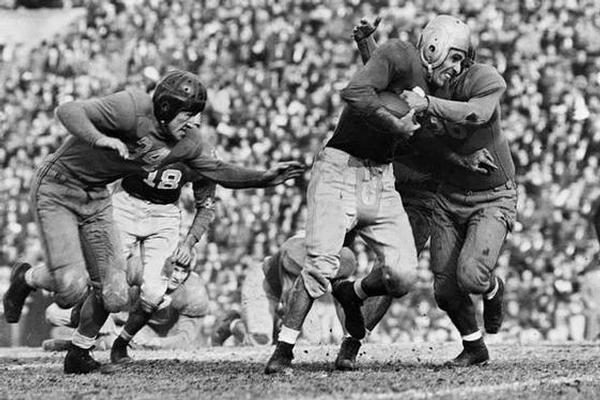
One of the most common defenses we always hear about are the 3-4 and the 4-3, but that is actually a lazy mans view of what reality is. Teams now base their defenses on 3-3-5. 4-2-5, or 2-4-5. I know, you say those are “hybrids” or “every play is a sub-package”. But what if you really look deep into it what was previously considered a team’s base defense (3-4 | 4-3) are now the sub packages and the previous nickel sets are now base.
The idea is a simple one; as spread formations and tempo based offenses are becoming the norm there defenses have to match up by getting their best players on the field. Offenses are looking for a “hat on a hat” situation and win with their best players as well. Defenses must also maintain their best athletes on the field as often as possible. This usually involves a sacrifice of a down lineman or a linebacker for a defensive back or a db/lb hybrid type player. There are a lot of variants that can be achieved and teams are as multiple with them as ever. But the talk of “how will the Jets adjust to John Fox bringing in his 3-4 defense?” is as irrelevant as ever. Coaches are going to do whatever they need to to get their best men on the field in any given situation. This includes formations like a 1-6, 4-2-5, 3-3-5, 4-1-6 as well as the classics 4-3, 3-4 and 4-6.
Establishing what a team is running remains as simple as ever. However it now requires you to work backwards. Teams traditionally built from their front backwards. As the spread and the passing game became more prevalent it fell on defensive coaches to look firstly at their defensive backfield and their coverage before building their front. This has lead to more specialized packages and players, in particular the 2-4-5.
Though most teams are now hybrids (mixing up their front based on down and distance), there remain teams who run a base with only few variants. The Panthers for example have two exceptional linebackers allowing them to run a base 4-2-5.
What continues to separate coaches is whether their team is a one-gap or two-gap defense. The choice is a philosophical one. The “gaps” refer to the offensive line and the space between the lineman. To “one-gap” means to be responsible for and attack the one space you were assigned. The assignment is to disrupt and stop any rusher who comes towards the gap. Both defensive lineman and linebackers are assigned a gap.
To “two-gap” is as it sounds. Players are responsible for two-gaps. Rather than attack, the space lineman attack blockers. They look to control the offensive lineman and either penetrate into the backfield or track the ball and make a play. It’s a big task and, conventionally, requires behemoths on the interior. A large bodied player must be able to control another player or two. It’s a difficult job and those who are good two-gap players are special.
Traditionally, whether you were a one-gap or two-gap team was dependent on the front you played (3-4 equals two-gap, 4-3 equals one-gap). As defenses continue to be overhauled in an attempt to counter the offensive onslaught of the past decade, they have become more hybrid and forward thinking. No one exemplifies this more than Patriots head coach Bill Belichick who utilises a multi-gap system. Some players one-gap others two-gap on the same play.
It is a system that continually has people guessing as to what to call Belichick’s system. It is simply ingenious. It is difficult to coach and it is even more difficult to find players with the football IQ and talent to carry it out.
What is clear is that as offensive coaches continue to earn the applauds, it is the defensive coaches and minds who continue to push the boundaries and innovate in an attempt to stop the high powered modern offenses.
As I stated earlier, the end goal is for defenses to get their best players on the field for whatever down and distance they’re dealing with. They want as much speed and power as possible while being able to hold up in coverage. But what are the roles of the players? And what are the defensive concepts looking for?
Everybody is looking for great secondary players. There are scheme fits from team to team, based on how much man coverage or zone coverage each team uses. The rise of all these new defensive concepts has lead to a leap in value of the nickelback. Teams must now have a number of good cornerbacks and a slot corner can expect to play 75% of the teams defensive snaps. Have a bad one and you’re toast. Some of the league’s best receivers do their damage from the slot; Antonio Brown, Julian Edelman etc. and lighter defensive fronts put even more pressure on the position.
The difference in roles comes with the defensive fronts:
3-3-5
– The three lineman are a traditional front three lineman. One nose tackle and two defensive ends, though the defensive ends must also be big enough to play on the interior and penetrate double teams.
– The linebackers must all be versatile enough to rush the passer, play in space and stop the run. Thus, the versatility of scheme is that the offense doesn’t know where the fourth rusher is coming from and the defense can disguise their plans a lot more frequently and easily. Some teams may have a specific edge-rusher but they’re ultimately looking for guys versatile enough to play inside or outside such as Clay Matthews in Green Bay.
– The scheme is designed around disguise and the zone blitz.
4-2-5
– The lineman are explosive one-gap players. The interior is largely responsible for the run and the ends for pressuring the pocket.
– The 4-2-5 asks an awful lot of the linebackers. They must excel in space, coverage and have great lateral quickness. It’s a specialised, difficult, position but if you have one it can radically improve your team; think of Luke Kuechly in Carolina and Bobby Wagner in Seattle.
2-4-5
– The 2-4-5 is an edge-rushing package with two interior lineman to stuff the run, two inside linebackers and two DE/OLB hybrids who purely rush the passer, like Chandler Jones for the Patriots. The package allows you to get creative with blitzes but is prone to struggle against the run with “tweeners” on the outside.
Though teams design their club around one of these base outlines, again, teams, for the most part, will use some form of all these alignments during games based on situations and match ups, including the conventional 3-4, 4-3 and 4-6.
The ongoing evolution of defenses is fascinating and the ‘cat and mouse’ aspect is what draws me to the game. Though people still insist on using outdated terminology to talk to the masses, take the time to evaluate your own team and see what packages they’re using as their base and in obvious run/pass situations.


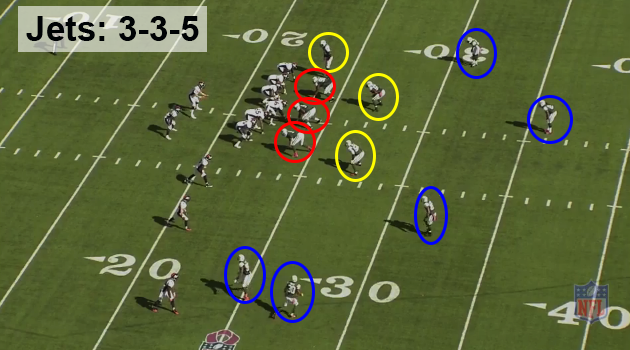
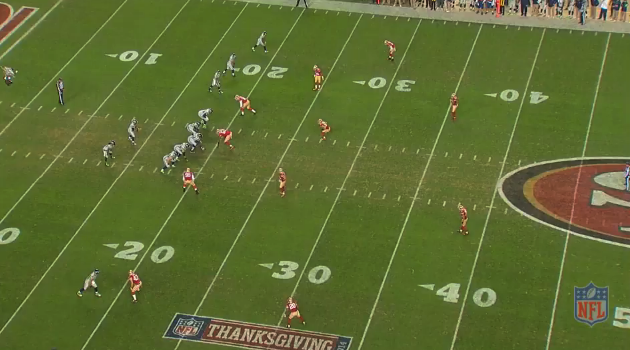
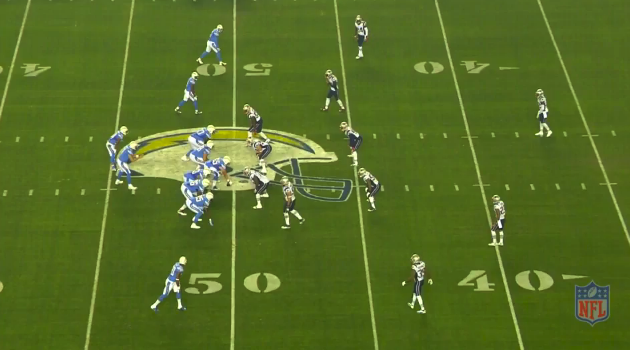
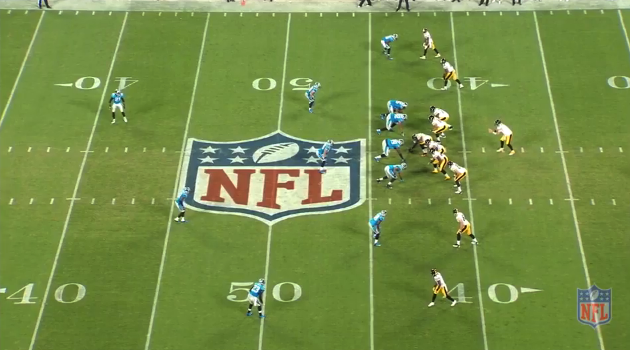
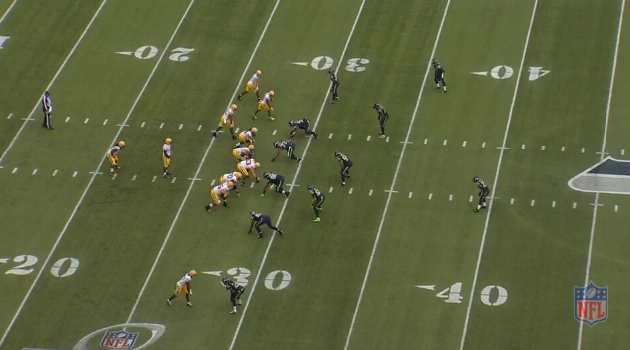
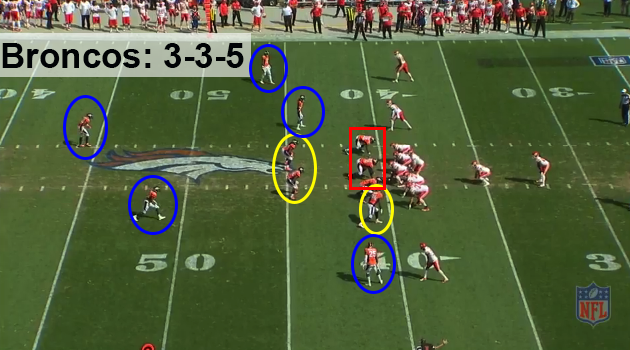
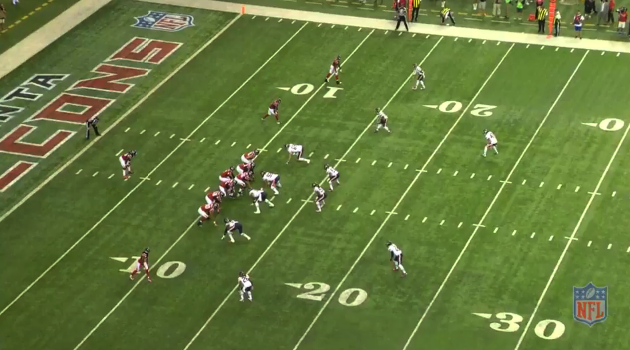
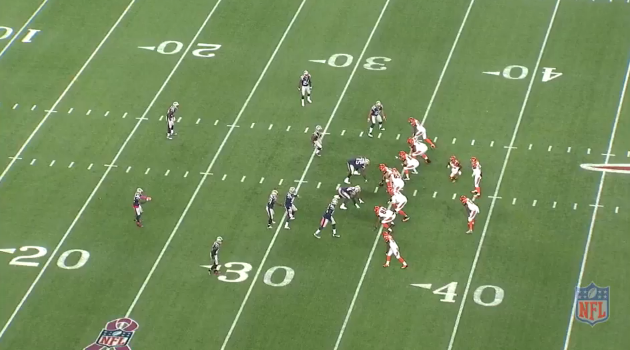



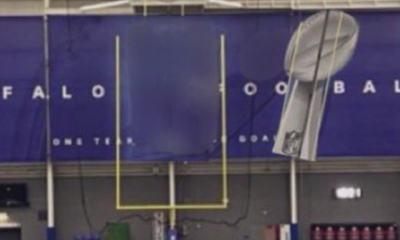
































Facebook
Twitter
RSS